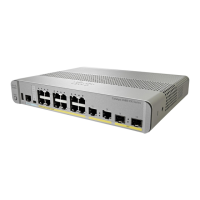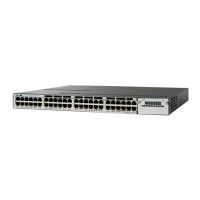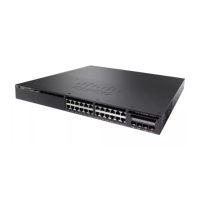•
Sending host-query messages by default every 60 seconds in order to keep the IGMP overhead on hosts
and networks very low.
Devices That Run IGMPv2
IGMPv2 improves the query messaging capabilities of IGMPv1.
The query and membership report messages in IGMPv2 are identical to the IGMPv1 messages with two
exceptions:
•
IGMPv2 query messages are broken into two categories: general queries (identical to IGMPv1 queries)
and group-specific queries.
•
IGMPv1 membership reports and IGMPv2 membership reports have different IGMP type codes.
IGMPv2 also enhances IGMP by providing support for the following capabilities:
•
Querier election process--Provides the capability for IGMPv2 devices to elect the IGMP querier without
having to rely on the multicast routing protocol to perform the process.
•
Maximum Response Time field--A new field in query messages permits the IGMP querier to specify
the maximum query-response time. This field permits the tuning of the query-response process to control
response burstiness and to fine-tune leave latencies.
•
Group-Specific Query messages--Permits the IGMP querier to perform the query operation on a specific
group instead of all groups.
•
Leave-Group messages--Provides hosts with a method of notifying devices on the network that they
wish to leave the group.
Unlike IGMPv1, in which the DR and the IGMP querier are typically the same device, in IGMPv2 the two
functions are decoupled. The DR and the IGMP querier are selected based on different criteria and may be
different devices on the same subnet. The DR is the device with the highest IP address on the subnet, whereas
the IGMP querier is the device with the lowest IP address.
Query messages are used to elect the IGMP querier as follows:
1
When IGMPv2 devices start, they each multicast a general query message to the all-systems group address
of 224.0.0.1 with their interface address in the source IP address field of the message.
2
When an IGMPv2 device receives a general query message, the device compares the source IP address in
the message with its own interface address. The device with the lowest IP address on the subnet is elected
the IGMP querier.
3
All devices (excluding the querier) start the query timer, which is reset whenever a general query message
is received from the IGMP querier. If the query timer expires, it is assumed that the IGMP querier has
gone down, and the election process is performed again to elect a new IGMP querier.
By default, the timer is two times the query interval.
IP Multicast Routing Configuration Guide, Cisco IOS XE Release 3.6E (Catalyst 3850 Switches)
OL-32598-01 37
Configuring IGMP
IGMP Versions Differences

